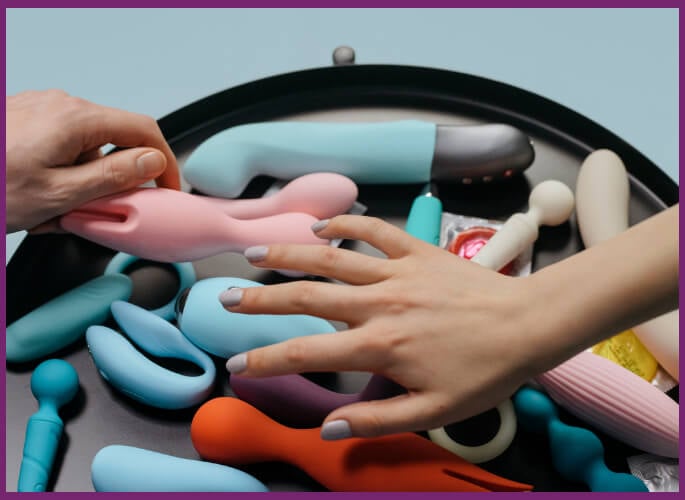When comparing sex toys, you'll likely see the words "porous" and "non-porous" in product feature lists.
Porosity - the presence of tiny, microscopic pores - can be significant, particularly if you share sex toys or if you're especially prone to urinary tract infections.
Pores are tiny holes, and if a sex toy is porous, small amounts of liquid (including body fluids and lubrication) can infiltrate the pores, carrying viruses, bacteria, and other microorganisms.
Obviously, this isn't ideal for your sexual health since you'll be exposed to those microorganisms the next time you use the toy.
Before we get into the hygienic benefits of different materials, it's helpful to consider which materials are porous and unnecessary.
Non-porous materials are solid to the touch, although they're not necessarily hard. Some common non-porous materials include:
- ABS Plastic
- Pure Silicone
- Borosilicate Glass
- Steel and Other Metals
- Ceramics
- Acrylics
Note that silicone has to be "pure" silicone to make this list. Some companies produce silicone blends, including rubbers, plastics, and other substances that aren't necessarily non-porous.
Likewise, ABS plastic is generally considered the standard for sex toy materials, and some softer plastics might not qualify.

While the following materials are considered porous, they're not necessarily unsafe; they require thorough cleaning after each use, and many health professionals discourage sharing them unless you're using a condom or dental dam (more on this in a minute).
Porous materials include:
- Silicone Blends
- Jelly and Soft Thermoplastic Materials (TPR)
- Cyberskin, UR3, and Other Ultra-Realistic Materials
- Rubber
If you doubt whether your toy is porous or non-porous, you can check the packaging, but you might not get a clear answer if it's made from rubbers or plastics.
When possible, our site posts whether or not a toy is non-porous under the "safety features" section of each product listing.
Porous Sex Toys and Sexually Transmitted Infections
So, can porous sex toys really cause health issues? They're not necessarily dangerous, but they certainly require a little extra care - especially if you're sharing.
A study from the Indiana University School of Medicine found that 40 percent of sex toys tested positive for human papillomavirus (HPV) 24 hours after cleaning.
In contrast, the study had a small sample size, some infections can be transferred, and there's certainly no reason to take risks.
Suppose you're planning on sharing your toys. In that case, you should either use condoms or sanitize them thoroughly by cleaning with a toy cleaner or boiling them after each use (provided that the toy material can withstand a boiling pot of water, of course).
Porous toys can't be sanitized in this manner, so your choices are more limited; use a condom or don't share at all.
Can Porous Sex Toy Materials Cause Yeast Infections or UTIs?
Even if you don't plan on sharing your toy, porosity can be an essential factor. While there's not much scientific research on the subject, it stands to reason that if viruses can live in microscopic spores, bacteria and fungi can also flourish.
Using a porous sex toy without carefully cleaning it could result in urinary tract infections, yeast infections, and related conditions.
Regardless of your toy's material, clean it after every use, following the manufacturer's instructions to protect yourself.
A dedicated sex toy cleaner makes the process much easier and potentially safer since some soaps can degrade certain materials.
They can also significantly cut your cleaning time, since in most cases, you apply the cleaner, rub your toy down, dry it, and store it.
Choose a cool, dry place for storage, and put your toy in a case or box to prevent dust and other contaminants from settling on it.
Finally, be sure to use appropriate lube with your toys. Oil-based lubes can break down some materials, and silicone lubricants can damage silicone toys, creating tiny holes that make the toy unsafe.
Silicone can also break down into a gummy mess, ruining your toy. With a bit of care, you can stay safe with any high-quality toy, regardless of its material.












